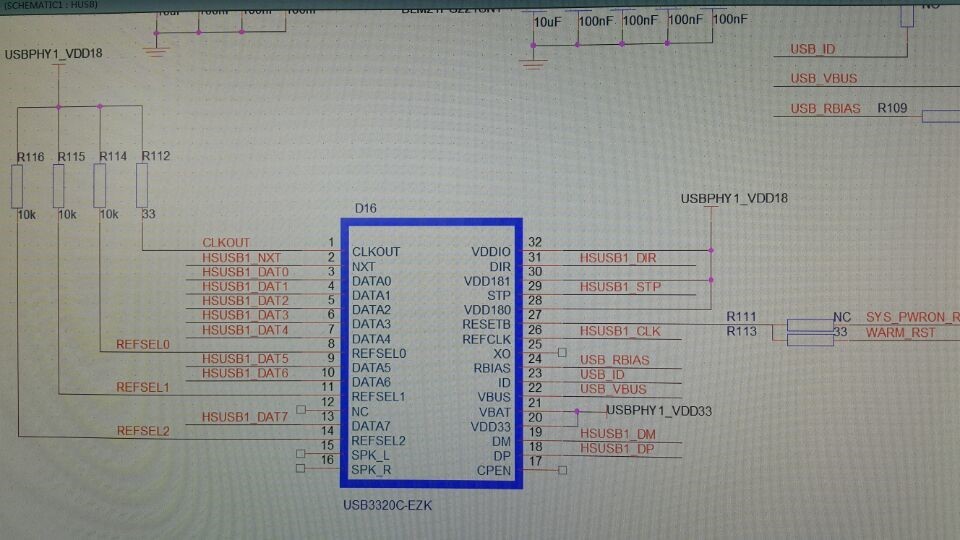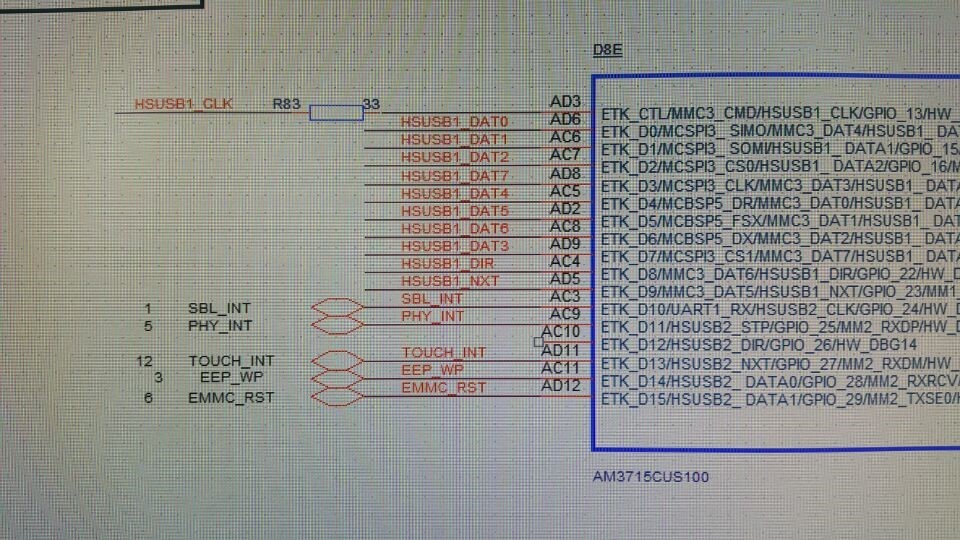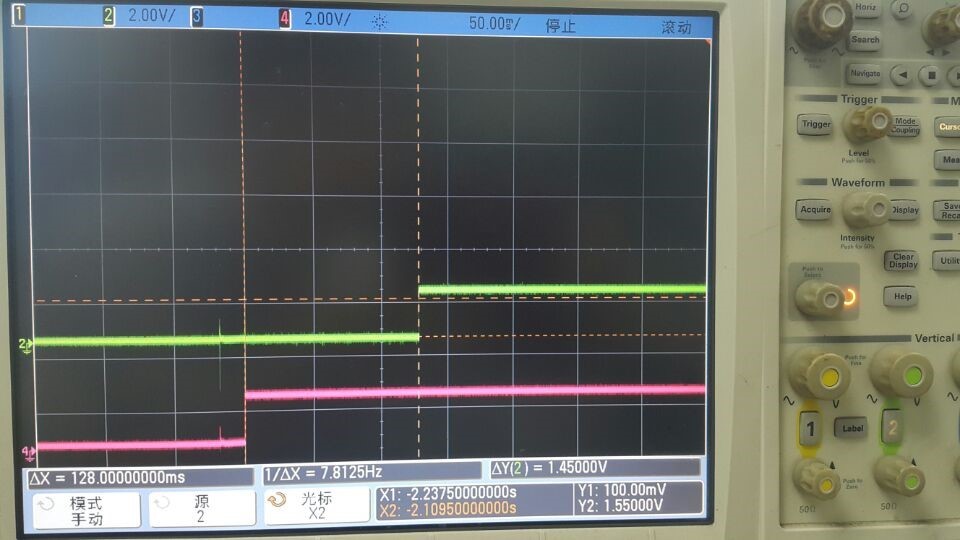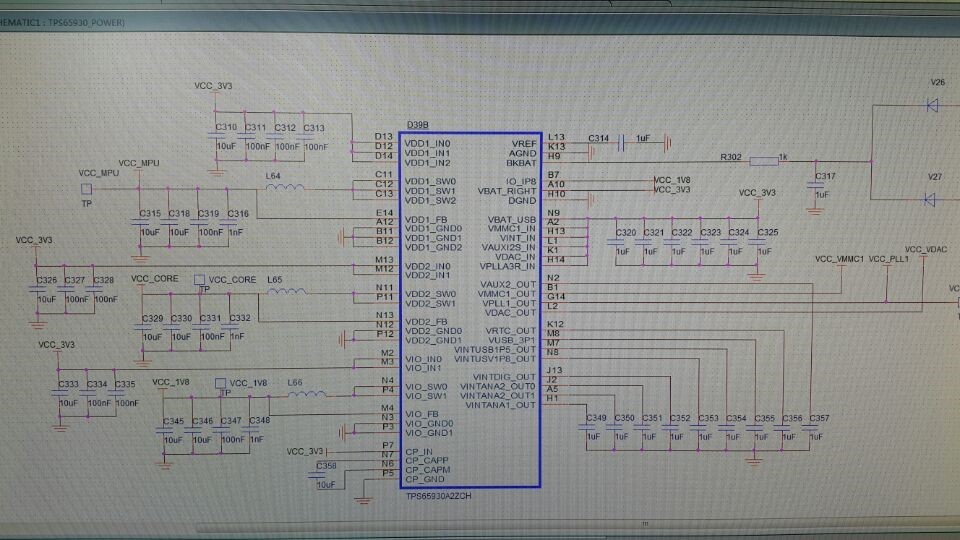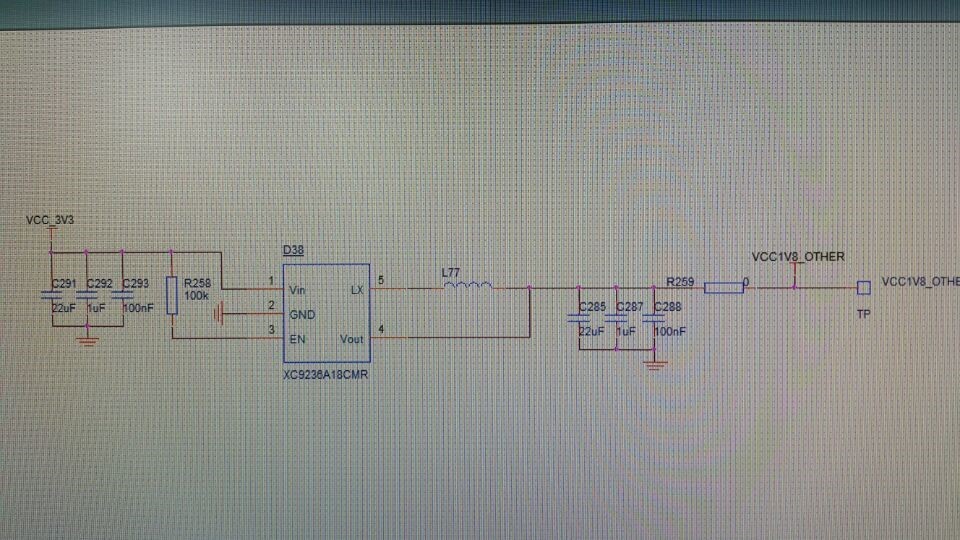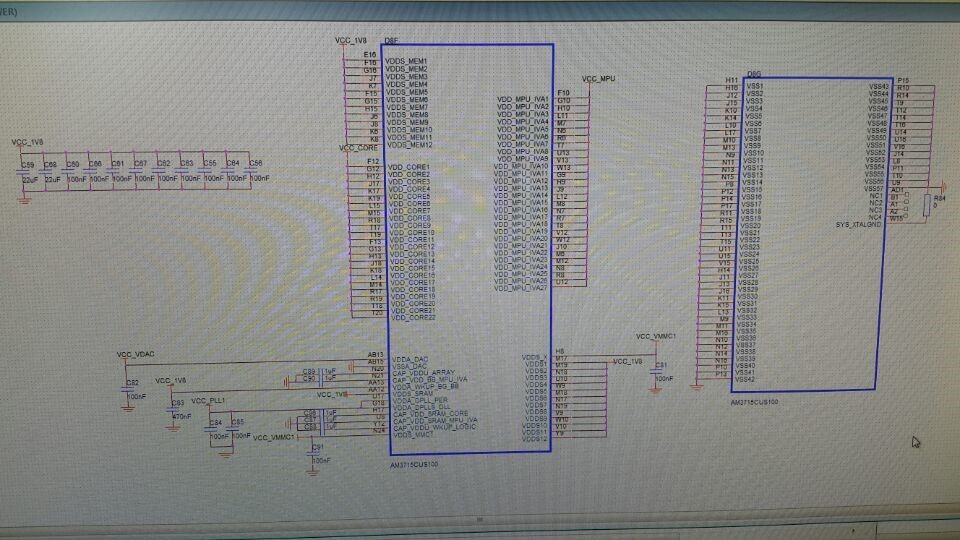Dears:
There is an issue during booting.
Sometimes HSUSB1_CLK signal will not have output signal.
Pls. refer the below schematic and waveform.
Btw, testing the delay time between sys_nreswarm and 1.8V is different with datasheet.
The time is about from 115 to 133ms. The waveform as below picture:
Green line is sys_nreswarm, and red line is 1.8V.
Pls. give some advice about these issues.


